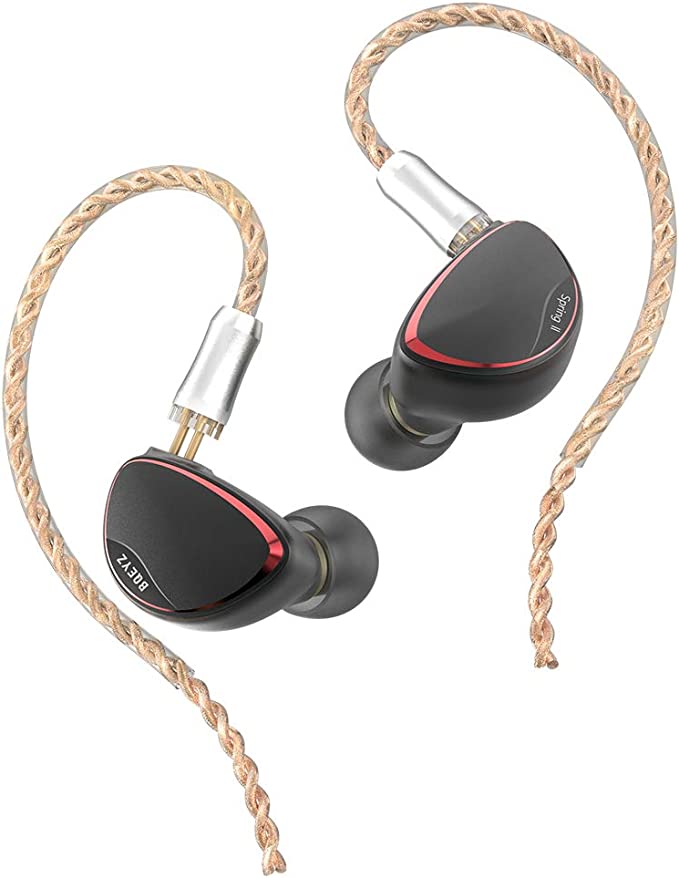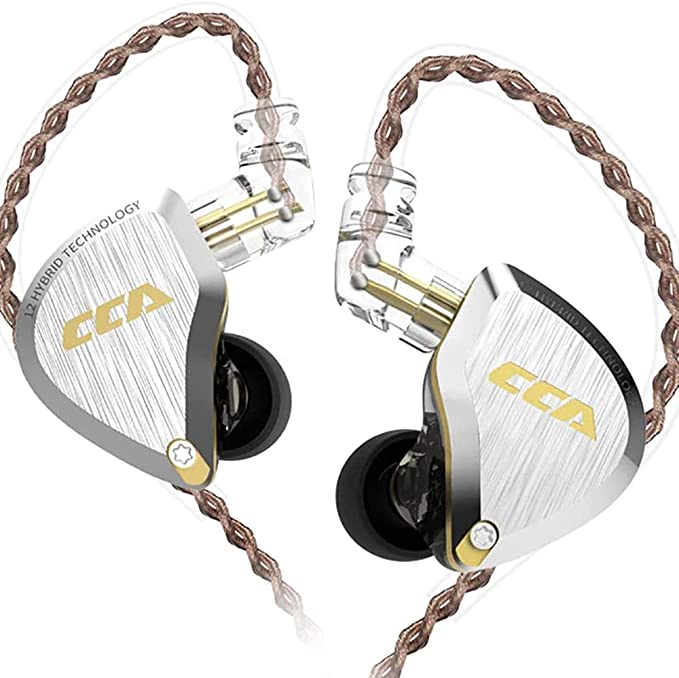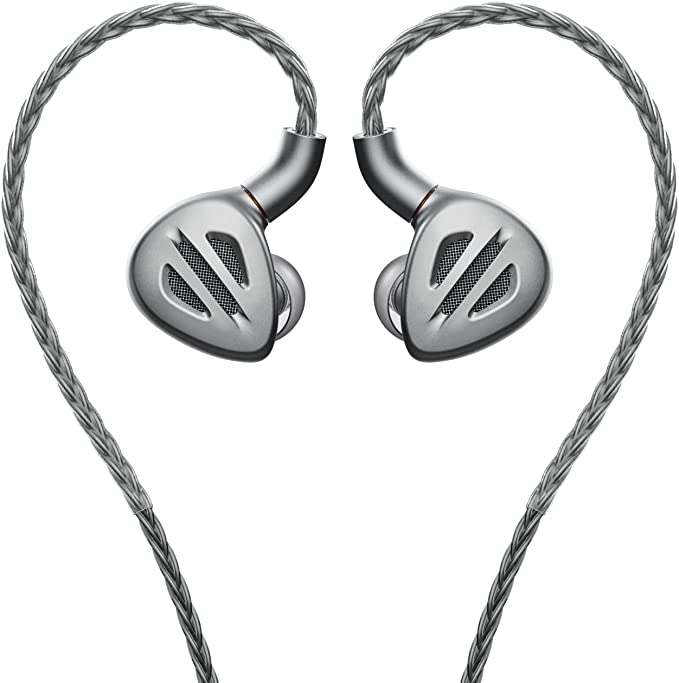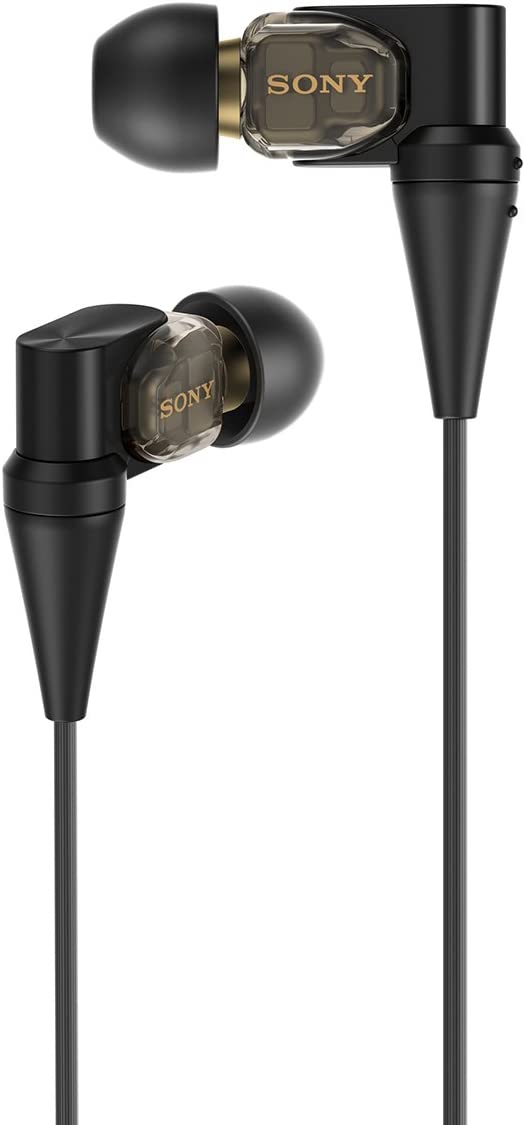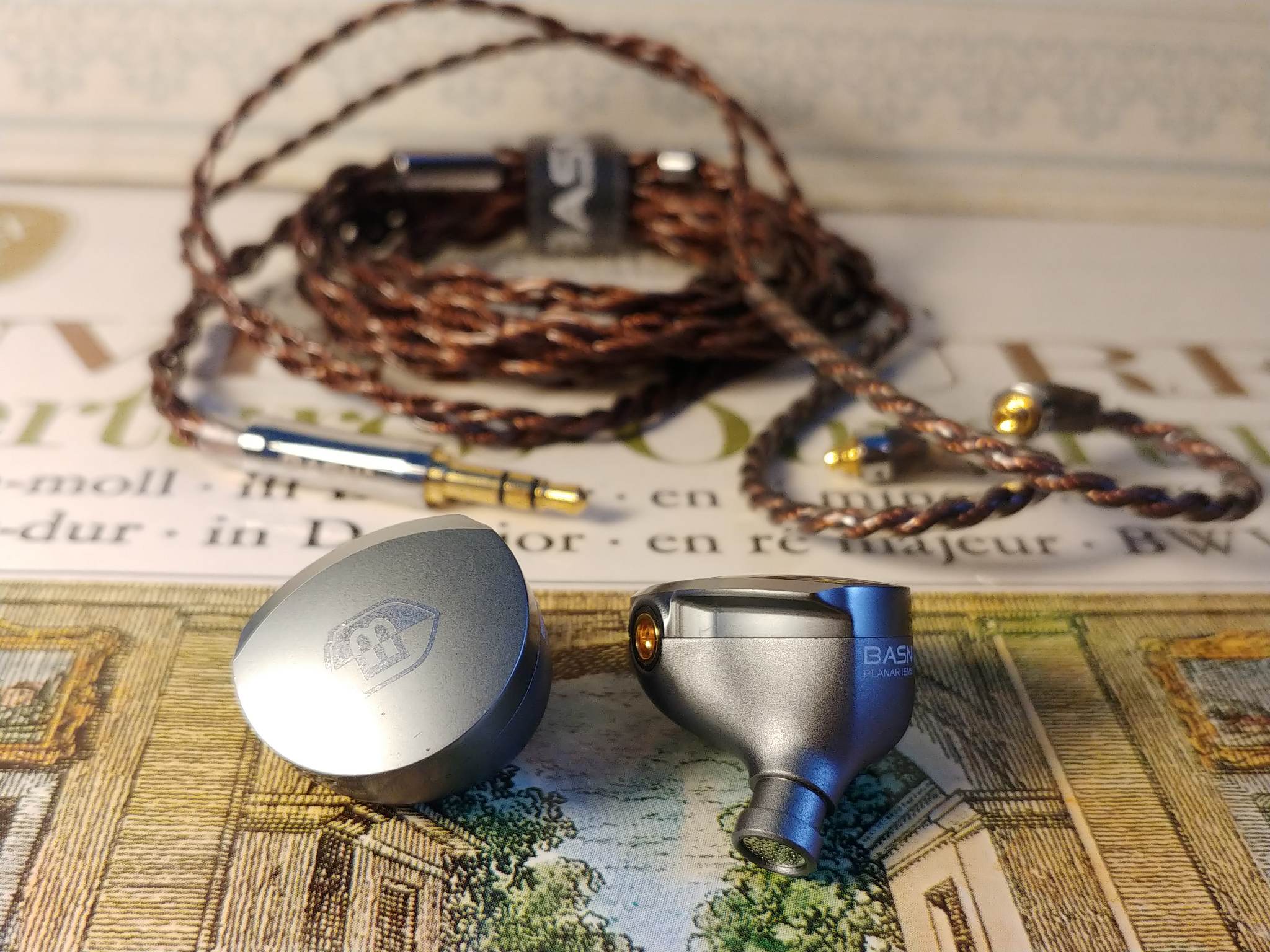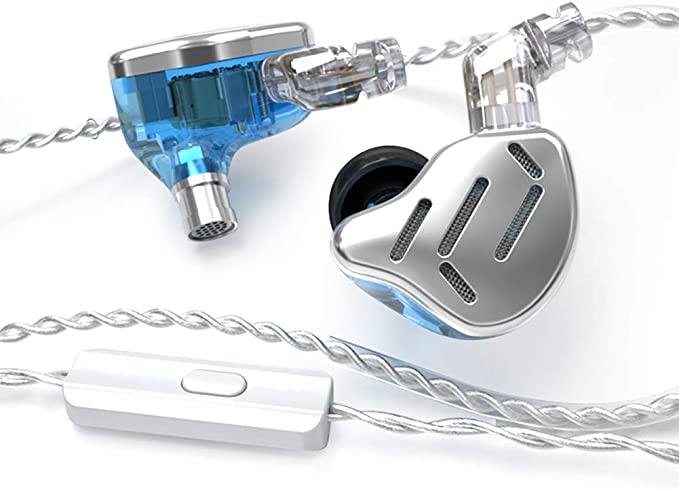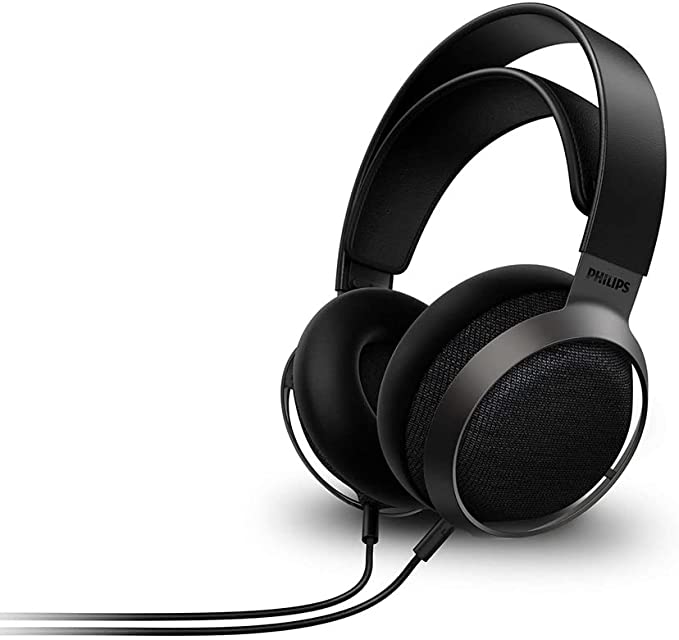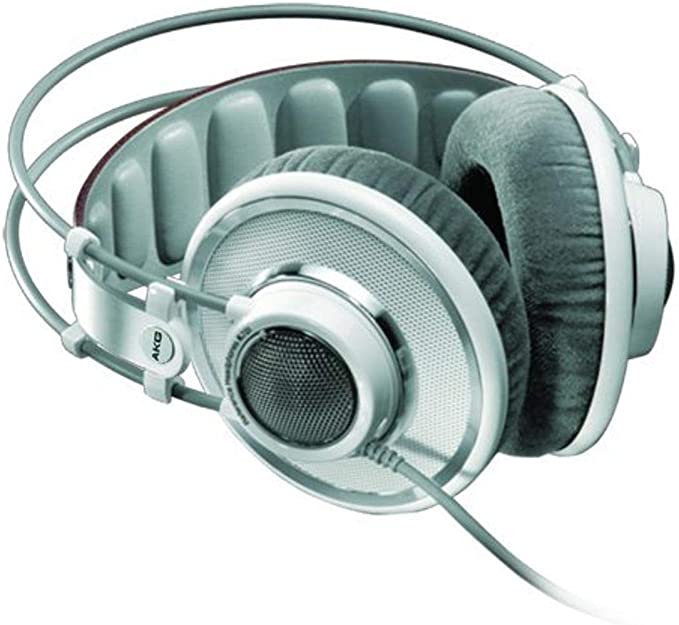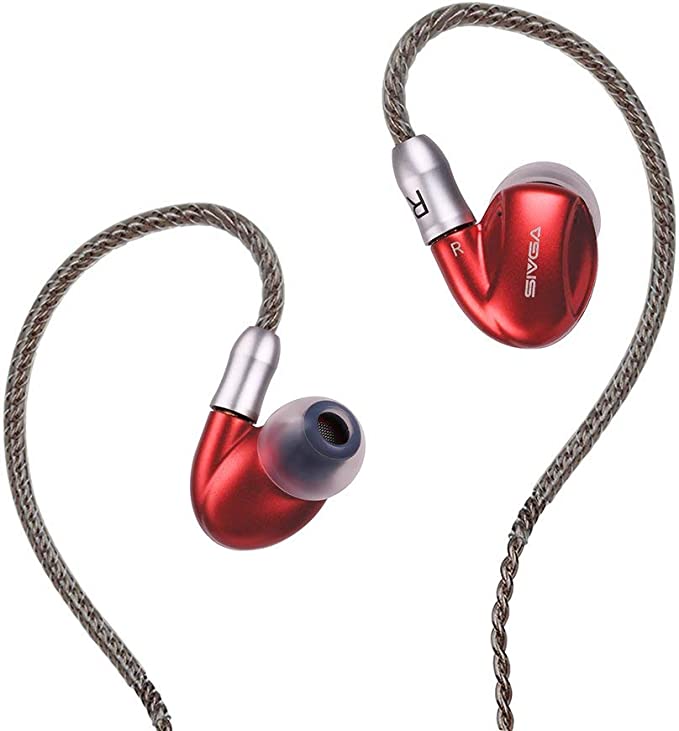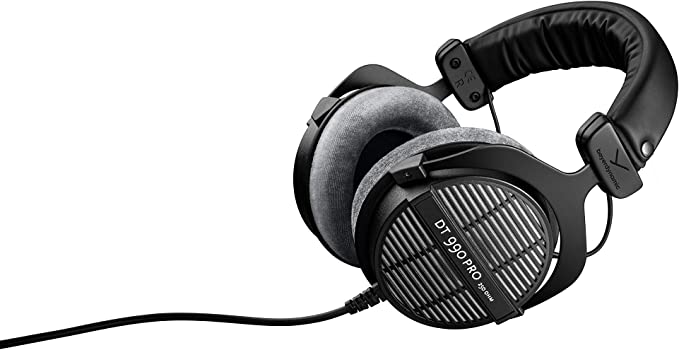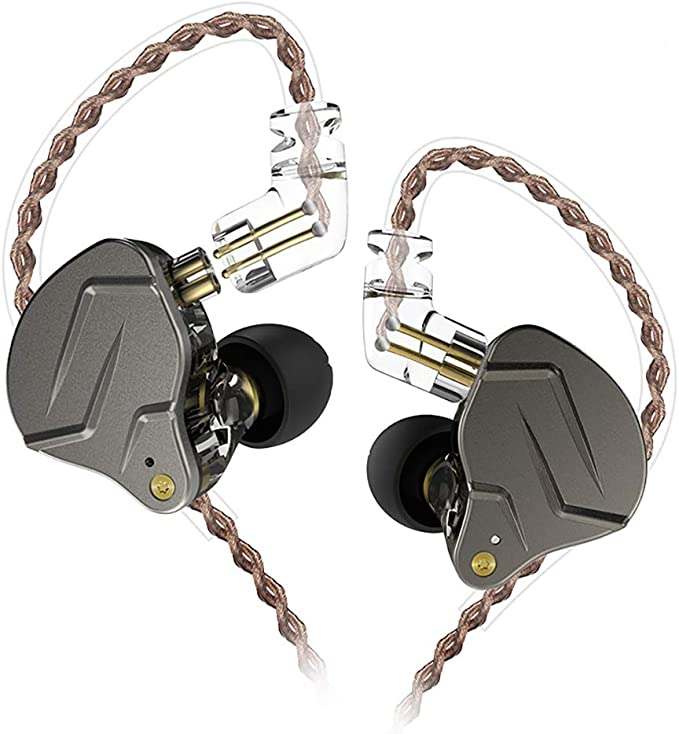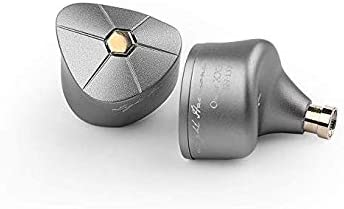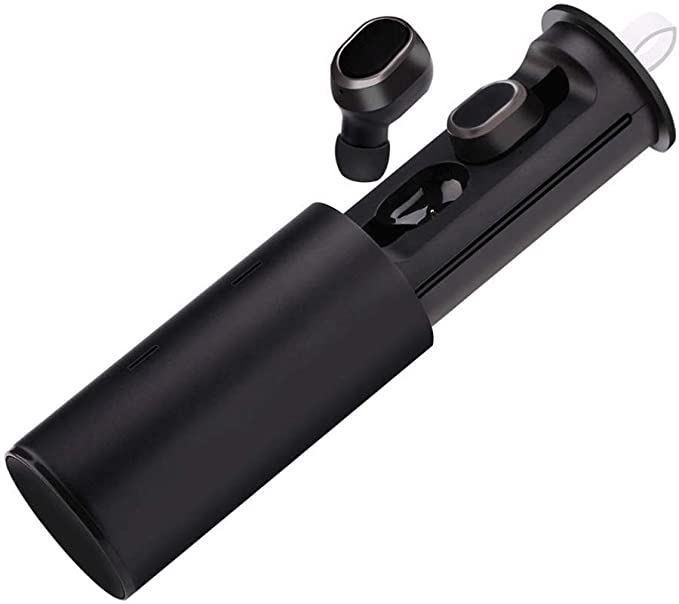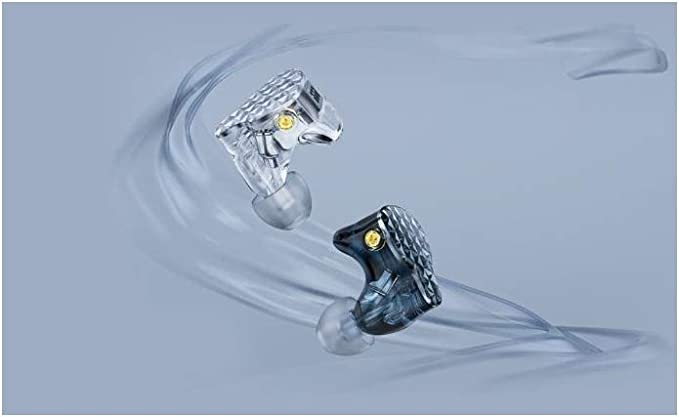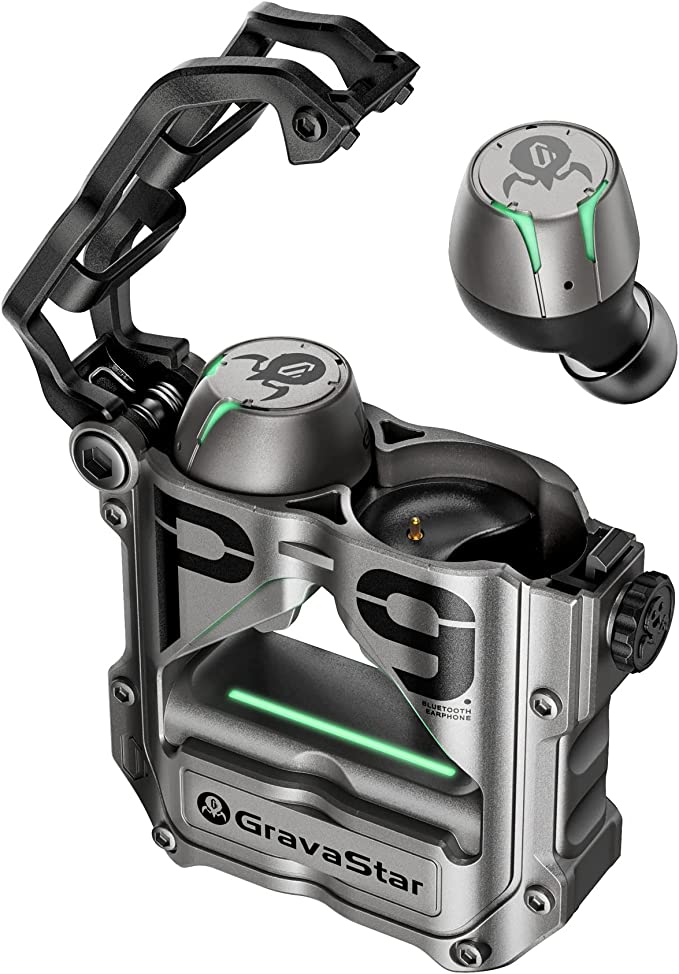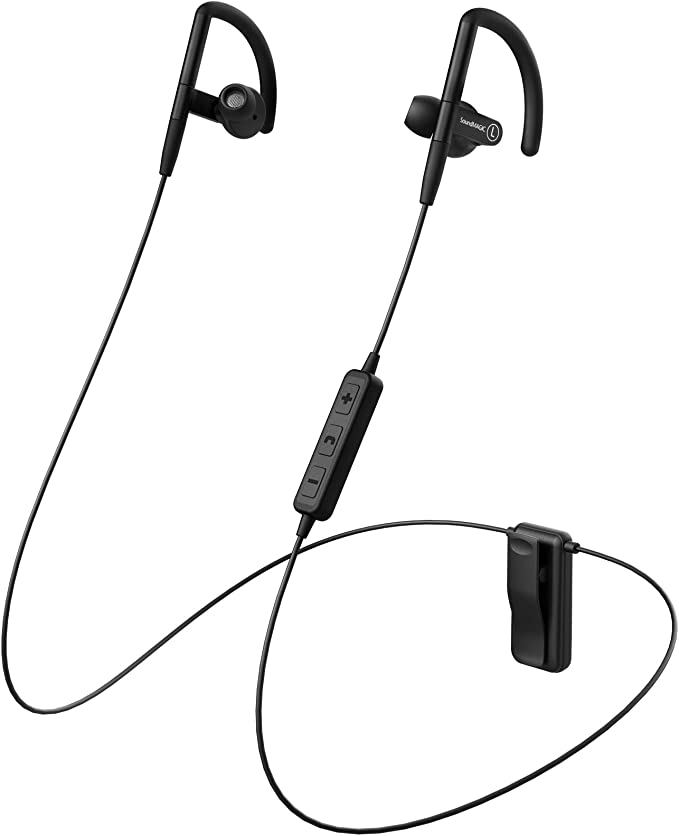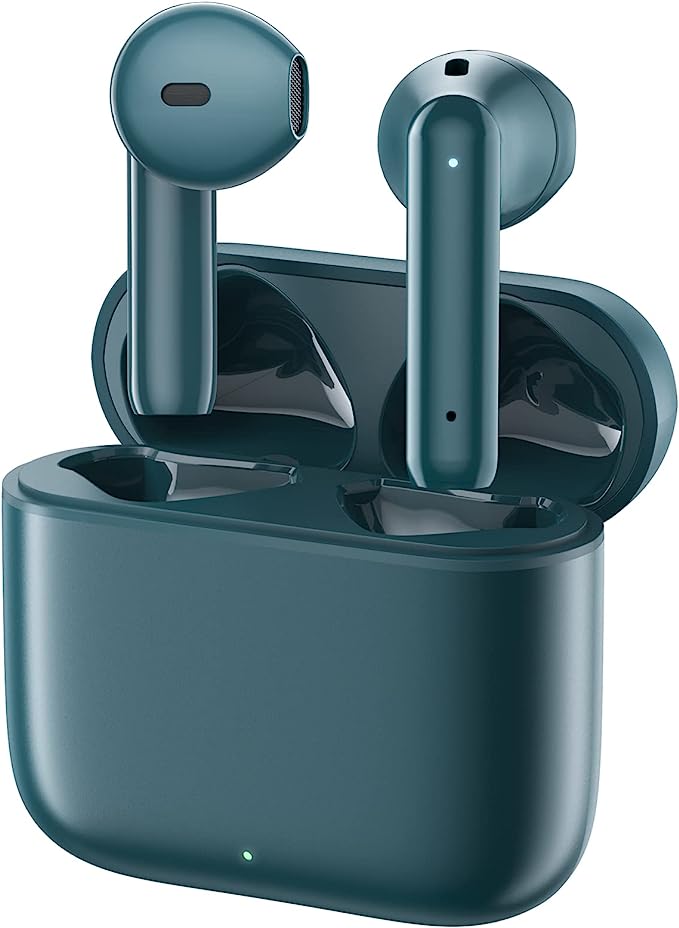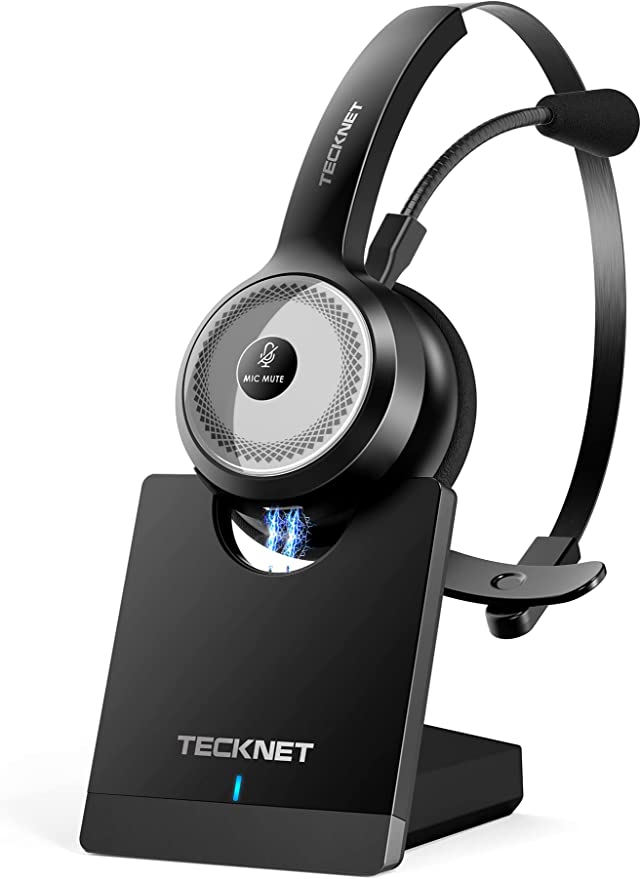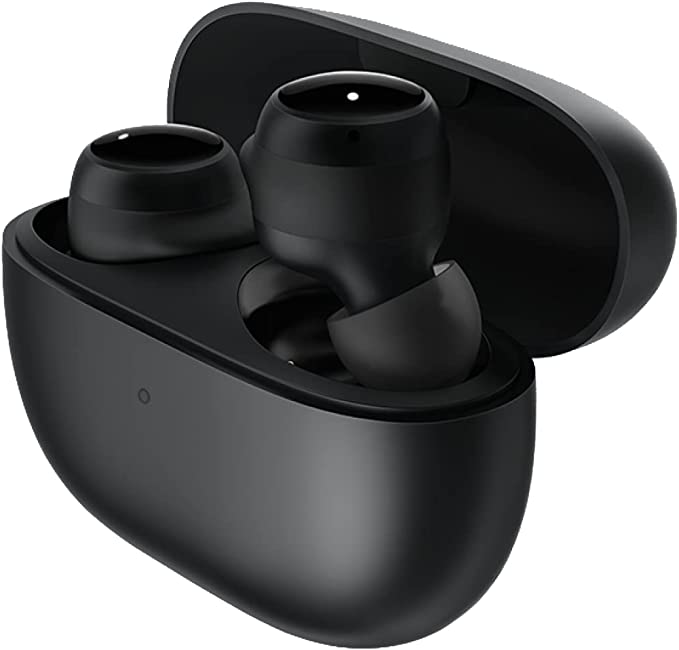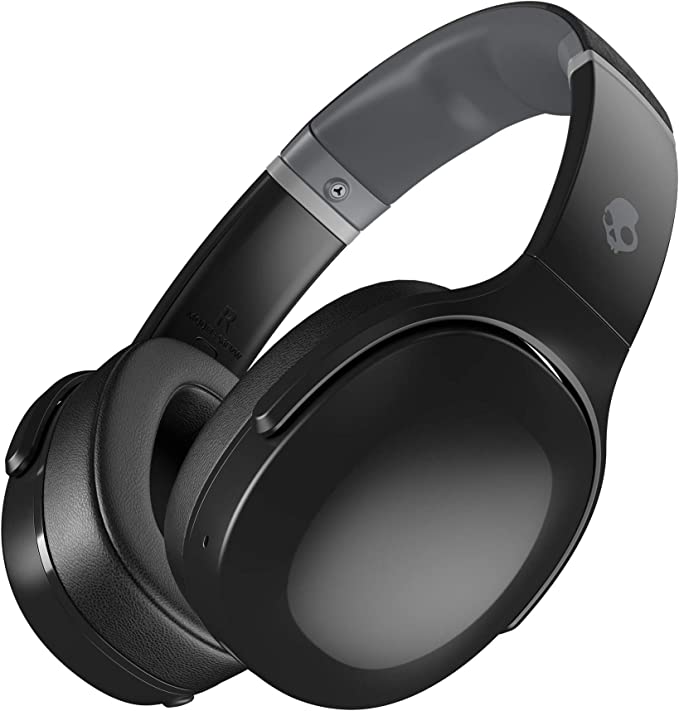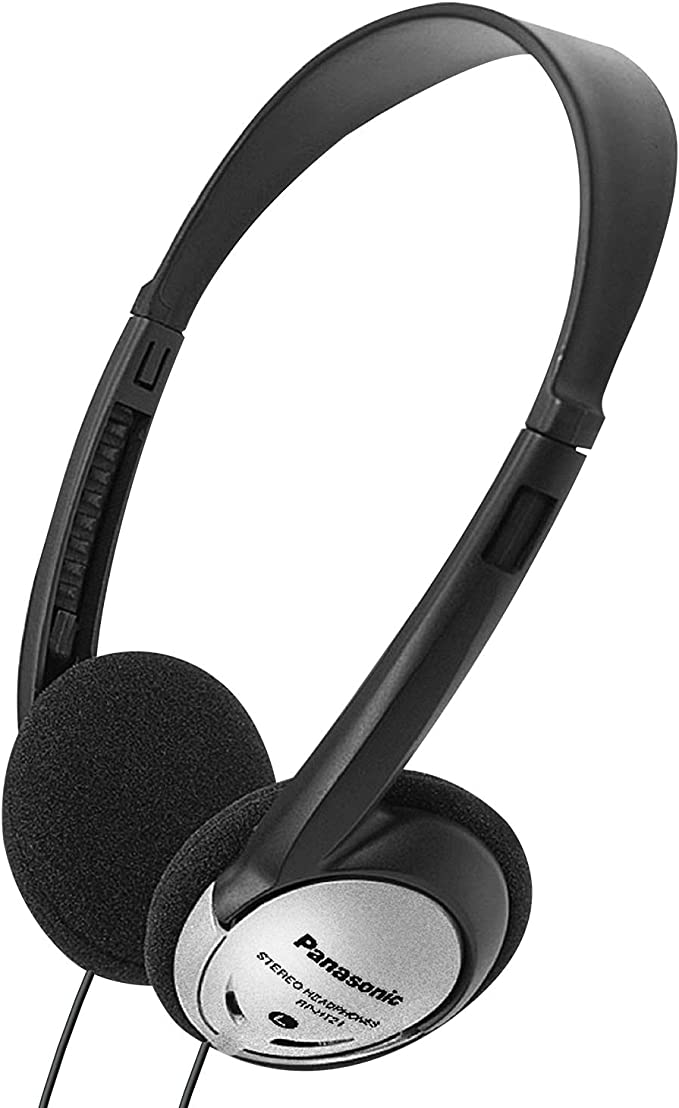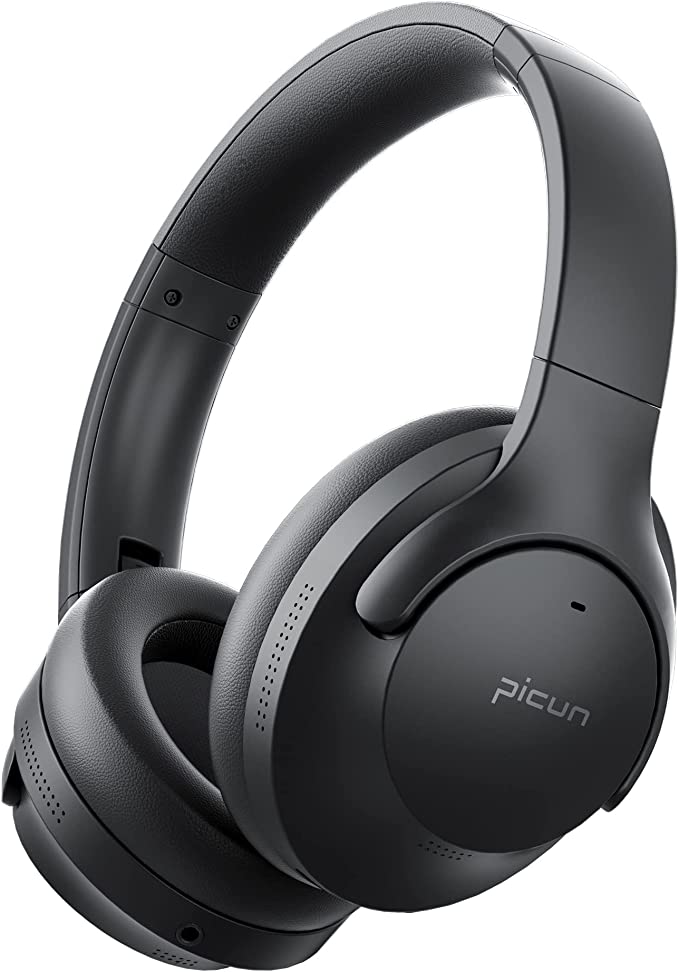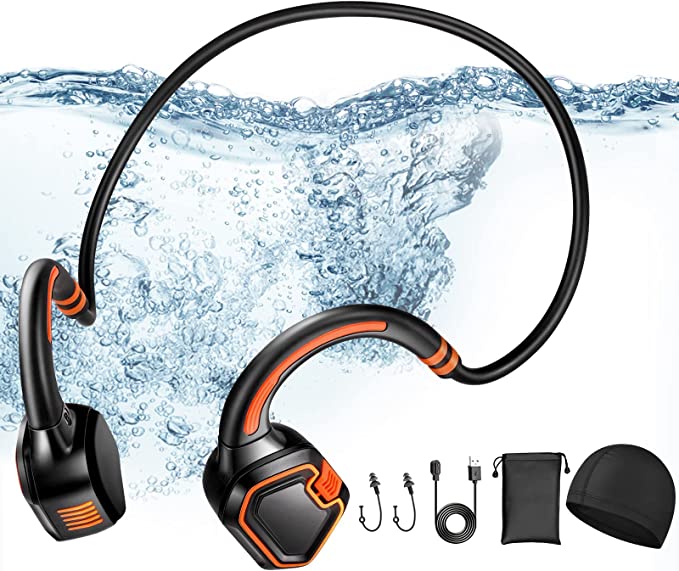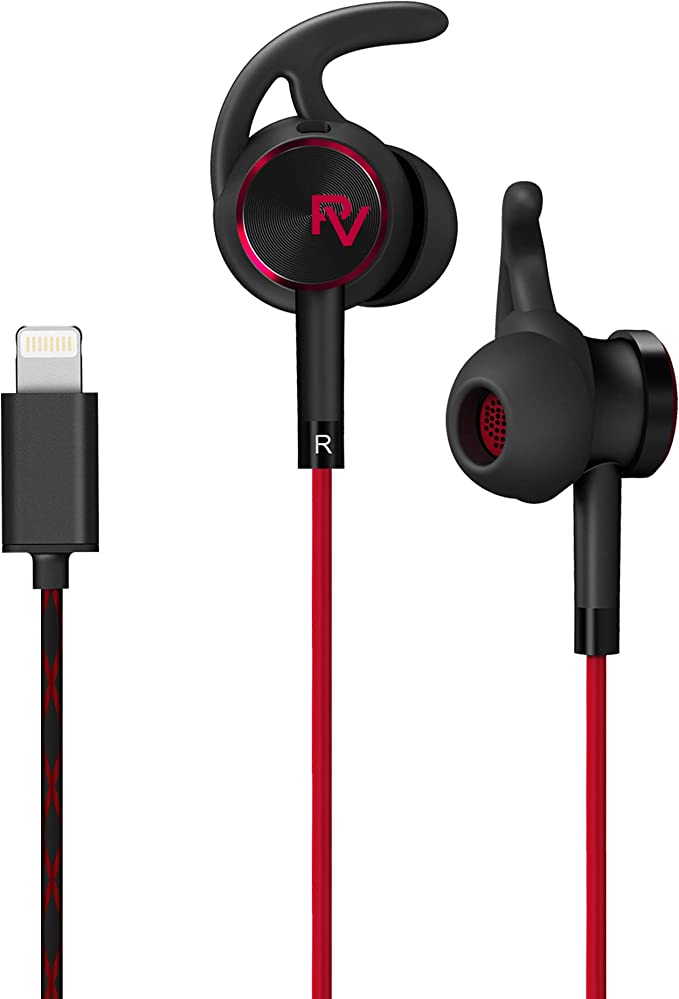Teckon IEM-S2-103: Experience HiFi Sound with Hybrid Driver Technology
Update on Feb. 22, 2025, 8:16 a.m.
The city hums with a cacophony of sounds. Buses roar, sirens wail, and the chatter of countless conversations blends into a constant, low-frequency drone. Amidst this urban orchestra, you crave a sanctuary, a personal space filled only with the music you choose. This is the promise, and the challenge, of modern in-ear monitors (IEMs). The Teckon IEM-S2-103 steps up to this challenge with a sophisticated approach: hybrid driver technology. But what does that mean, and why should you care? Let’s explore.

The Evolution of In-Ear Listening
The quest for portable, high-fidelity audio is not new. The earliest in-ear monitors weren’t designed for casual listeners, but for musicians on stage. Before IEMs, stage performers relied on bulky, floor-based wedge monitors to hear themselves over the roar of the crowd and other instruments. These monitors were loud, often distorted, and created feedback problems.
In the 1980s, engineers began experimenting with miniaturized earphone designs that could deliver a clear, isolated monitor mix directly to the performer’s ear. Early models were custom-molded to the individual’s ear canal, ensuring a tight seal and maximum noise reduction. These custom IEMs, pioneered by companies like Etymotic Research, revolutionized live performance.
Over time, the technology trickled down to the consumer market. Universal-fit IEMs, with interchangeable ear tips to accommodate different ear sizes, became increasingly popular. They offered a significant upgrade in sound quality and noise isolation compared to traditional earbuds.

Inside the Sound: Deconstructing the IEM
At the heart of any earphone, including IEMs, is the driver. This is the tiny transducer that converts electrical signals into sound waves. There are two primary driver types used in IEMs: dynamic drivers and balanced armature drivers. Each has its strengths and weaknesses.
Dynamic Drivers: The Power of Moving Air
The dynamic driver is the workhorse of the headphone world. It’s essentially a miniature loudspeaker. It consists of a diaphragm (a thin, flexible membrane), a voice coil (a coil of wire), and a magnet. When an electrical audio signal passes through the voice coil, it creates a fluctuating magnetic field. This field interacts with the permanent magnet, causing the voice coil (and the attached diaphragm) to vibrate. These vibrations push and pull the air, creating sound waves.
Think of a dynamic driver like a drum. The larger the drumhead (diaphragm), the more air it can move, and the more powerful the bass response. Dynamic drivers are renowned for their ability to produce rich, deep bass. However, they can sometimes struggle with speed and detail, particularly in the higher frequencies. This is because the larger diaphragm has more inertia, making it slightly slower to react to rapid changes in the audio signal. This is referred to as “transient response.”

Balanced Armature Drivers: Precision and Detail
Balanced armature drivers are a different beast altogether. They’re much smaller than dynamic drivers, and they operate on a different principle. A balanced armature driver consists of a tiny reed (the armature) that is balanced between two magnets. A small coil of wire is wrapped around the armature. When an electrical signal passes through the coil, it creates a magnetic field that causes the armature to pivot. This pivoting motion is transferred to a small diaphragm, which vibrates to produce sound.
Imagine a balanced armature driver like a finely tuned guitar string. It’s small, lightweight, and incredibly responsive. This allows it to reproduce high frequencies with exceptional detail and clarity. Balanced armature drivers excel at revealing subtle nuances in vocals, instruments, and high-frequency effects. However, due to their small size, they typically don’t move as much air as dynamic drivers, resulting in a weaker bass response.
The Hybrid Advantage: Combining the Best of Both Worlds
So, if dynamic drivers are great for bass, and balanced armature drivers are great for detail, why not use both? That’s the core idea behind hybrid IEMs. By combining a dynamic driver with one or more balanced armature drivers, engineers can create an earphone that delivers both powerful bass and exceptional clarity across the entire frequency spectrum. It’s like having a perfectly balanced audio team – each player specializing in their area of expertise.

Teckon IEM-S2-103: A Case Study in Hybrid Design
The Teckon IEM-S2-103 is a prime example of the hybrid approach. It utilizes a 1DD+1BA configuration: one dynamic driver and one balanced armature driver per ear. Let’s break down the specifics:
- Driver Configuration: The IEM-S2-103 features a 9.2mm dynamic driver for the low frequencies (bass). The model name suggests a relatively large diaphragm, which bodes well for powerful bass reproduction. For the mid and high frequencies, it uses a combination of two balanced armature drivers: a 29689 model for the mid-range and a 31736 model for the high frequencies.
-
Distortion: The product specification indicates a distortion rate of 2%.Distortion, in the context of audio, refers to any alteration of the original sound signal that results in unwanted sounds or inaccuracies.
-
Crossover Network: Dividing the Frequencies: In a hybrid IEM, a crossover network is crucial. This electronic circuit acts like a traffic controller, directing the appropriate frequencies to the correct driver. Low-frequency signals are sent to the dynamic driver, while mid and high-frequency signals are sent to the balanced armature drivers. The crossover point (the frequency at which the signal is split) is a critical design parameter that significantly impacts the overall sound signature. While the exact crossover point for the IEM-S2-103 isn’t specified in the provided information, a well-designed crossover ensures a smooth transition between the drivers, avoiding any gaps or overlaps in the frequency response.
- Impedance and Sensitivity:: With an impedance of 15 ohms and a sensitivity of 101 dB, these earphones are relatively easy to drive. This means you won’t need a dedicated headphone amplifier to achieve satisfying volume levels from a smartphone or portable music player. Lower impedance generally means the earphones require less power to produce sound. Higher sensitivity means they’ll play louder at a given power level.
-
Soundstage. Soundstage, is the perceived spatial location of sounds within a recording.
-
Material Science: The Role of Diaphragm and Housing Materials: The materials used in an IEM’s construction play a significant role in its sound quality. The diaphragm material of the dynamic driver, for instance, affects its stiffness, weight, and damping characteristics. Stiffer materials tend to be more accurate but may require more power to drive. Lighter materials are more responsive but may be more prone to distortion. The housing material (the shell of the IEM) also matters. A well-designed housing minimizes unwanted resonances and vibrations, which can color the sound. While the provided information doesn’t specify the exact materials used in the IEM-S2-103, the mention of a “custom-made pattern” suggests attention to detail in the housing design.
-
Frequency Response Interpretation: The listed frequency response of 20-200000Hz is, frankly, misleading. While technically the drivers might be capable of producing vibrations at those frequencies, the human ear can only perceive sounds between approximately 20Hz and 20kHz. Anything beyond that range is inaudible. This specification is more of a marketing tactic than a meaningful indicator of sound quality. A more realistic and useful specification would focus on the audible range and how flat the response is within that range. A flat frequency response means that the earphone reproduces all frequencies at roughly the same level, without emphasizing or de-emphasizing any particular range.
The purpose of tuning is to adjust the sound profile of the earphones to achieve a desired sonic character.
Beyond the Drivers: Other Key Features
The IEM-S2-103’s sound quality isn’t solely determined by its drivers. Other features contribute significantly to the overall listening experience.
Ergonomic Design: Comfort and Fit
An IEM’s sound quality is irrelevant if it’s uncomfortable to wear. The IEM-S2-103 boasts an ergonomic design based on “large data of the cochlea.” This means the shape of the housing is designed to fit the natural contours of the human ear, providing a secure and comfortable fit, even during physical activity. The use of silica gel eartips further enhances comfort and helps create a tight seal.
Noise Isolation: Blocking Out the World
One of the major advantages of IEMs is their ability to passively isolate the listener from external noise. By creating a tight seal in the ear canal, IEMs physically block out ambient sounds, allowing you to focus on your music without distractions. The IEM-S2-103 claims up to 26dB of noise isolation. This is a significant reduction in noise level, making it ideal for use in noisy environments like public transportation, airplanes, or busy offices.
Detachable Cable: Flexibility and Durability
The IEM-S2-103 features a detachable cable made of silver-plated oxygen-free copper. A detachable cable offers several benefits. First, it allows you to replace the cable if it gets damaged, extending the life of your IEMs. Second, it allows you to upgrade the cable to one with different sound characteristics or features (e.g., a cable with an inline microphone and remote). Silver plating improves conductivity, while oxygen-free copper minimizes signal degradation, ensuring a clean and clear audio signal. The use of a standard 3.5mm connector ensures compatibility with a wide range of devices.

The Future of Sound
The Teckon IEM-S2-103 represents a snapshot of current in-ear monitor technology. But the field is constantly evolving. Here are some emerging trends:
-
MEMS Drivers: Microelectromechanical systems (MEMS) drivers are a relatively new type of driver that promises even smaller size, lower power consumption, and potentially improved sound quality
-
Advanced Digital Signal Processing (DSP): While the IEM-S2-103 itself doesn’t incorporate active DSP, many higher-end headphones and IEMs are now incorporating digital signal processing to tailor the sound, implement active noise cancellation (ANC), and even personalize the audio based on the user’s hearing profile. This allows for features like customized EQ curves and spatial audio effects.
-
Wireless Connectivity: While the IEM-S2-103 is a wired earphone, the trend in the broader headphone market is undeniably towards wireless. Bluetooth technology continues to improve, with codecs like aptX Adaptive and LDAC offering higher bitrates and lower latency, closing the gap in audio quality between wired and wireless connections. However, for purists seeking the absolute best fidelity, wired connections, like that of the IEM-S2-103, still hold an edge.
-
Sustainable Materials: There’s a growing awareness of the environmental impact of consumer electronics. We can expect to see more headphones and IEMs incorporating recycled materials, sustainable packaging, and more durable designs to reduce e-waste.
-
Personalized Fit and Sound
In the future, advancements in 3D scanning and printing could make custom-fit IEMs more accessible and affordable.
Beyond the Technical Specifications: The Listening Experience
Ultimately, the true test of any earphone is how it sounds. While technical specifications provide valuable insights, they don’t tell the whole story. The Teckon IEM-S2-103, with its hybrid driver configuration, aims for a balanced sound signature – one that doesn’t overly emphasize any particular frequency range. This should result in a natural and detailed presentation, suitable for a wide variety of musical genres.
Imagine listening to a well-recorded orchestral piece. The dynamic driver would deliver the powerful rumble of the double basses and the resonant impact of the timpani drums. Simultaneously, the balanced armature drivers would reproduce the intricate details of the violins, flutes, and cymbals with clarity and precision. The crossover network would ensure a seamless blend between these drivers, creating a cohesive and immersive soundstage.
Or consider a vocal-centric track. The balanced armature drivers would shine, rendering the nuances of the singer’s voice with exceptional clarity. You’d hear every breath, every inflection, every subtle vibrato. The dynamic driver would provide the necessary warmth and body to the vocals, preventing them from sounding thin or sterile.
The IEM-S2-103’s noise isolation capabilities would further enhance the listening experience. By blocking out external distractions, you’d be able to fully immerse yourself in the music, hearing details you might otherwise miss. This is particularly beneficial in noisy environments, allowing you to enjoy your audio at lower, safer volumes.
A Note on Hearing Safety:
While high-fidelity audio is a wonderful thing, it’s crucial to protect your hearing. Listening to music at excessively high volumes, especially for extended periods, can cause permanent hearing damage. IEMs, because of their close proximity to the eardrum, can be particularly risky if used improperly. Always listen at moderate volumes, and take regular breaks to give your ears a rest.
Conclusion:
The Teckon IEM-S2-103 represents a thoughtful approach to in-ear monitor design. By combining the strengths of dynamic and balanced armature drivers, it aims to deliver a balanced, detailed, and immersive listening experience. Its ergonomic design, noise isolation capabilities, and detachable cable further enhance its appeal. While the exaggerated frequency response specification should be taken with a grain of salt, the underlying technology and design principles suggest a well-engineered product that prioritizes sound quality and user comfort. The IEM-S2-103 is a testament to how far in-ear audio technology has come, offering a level of fidelity and portability that was once unimaginable. It’s a compelling option for anyone seeking to elevate their personal audio experience.
